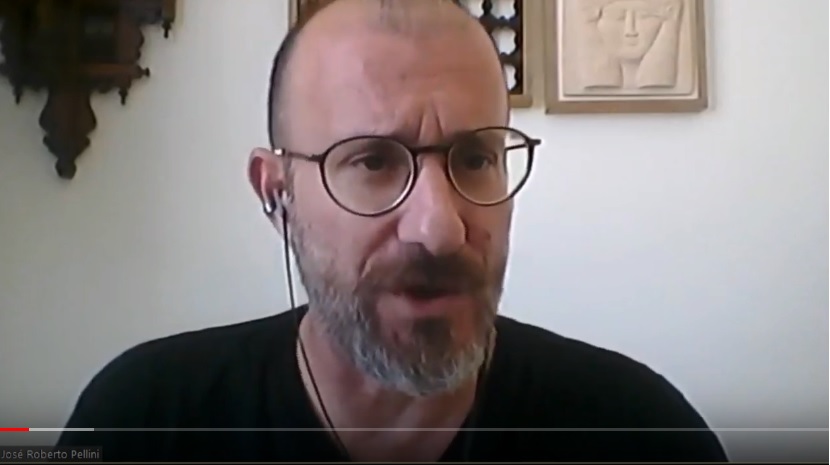São Paulo – The holder of a doctorate degree in Egyptian Archaeology and the coordinator of the Brazilian Archaeological Program in Egypt (BAPE), professor José Roberto Pellini (pictured above) discussed his experience in the Theban tombs of the Qurna area in Luxor, Upper Egypt, during an online event hosted by the Federal University of Minas Gerais (UFMG) this Wednesday morning (3).
During the e-conference “Transitory materialities: the experience of the Brazilian archaeological program in Qurna,” Pellini went over the latest developments of the Theban Tombs 123 (TT-123) and TT-368 digs, also known as the Amenemhet Project, underway since 2015. This is the first-ever archaeological mission in the Arab country led by a Brazilian professional and a Brazilian university – the UFMG.
Pellini was last in Luxor in January and February 2020, when a well was discovered inside the tomb. The work has been put on hold this year due to the pandemic, he said.
According to Pellini, the well was excavated, uncovering seven mummies, pharaonic items, modern items such as glass bottle fragments, and the existence of different floorings. Funeral cones bearing the name of the tomb’s owner, Amenemhet, were also encountered.
In January 2020, the statue room was also excavated, leading to a new, previously unmapped well. “As the dig progressed, we ascertained that the well led to Amenemhet’s funeral chamber. The work stopped just as we removed the sediments that had been blocking the entrance to the funeral chamber. We were able to see a lot of sediment and stones, but we couldn’t tell whether the sarcophagus holding Amenemhet’s body was there or not,” regretted Pellini. The conservation and restoration work also began in 2020, involving professor from the UFMG Fine Arts Department, he said.
Pellini also mentioned an experiment that saw the tomb lit up with electronic candles and cut off from natural light, based on the idea that the tombs may have been inhabited at night, both in the pharaonic and the modern eras. “It gave us a very different perception of the space (…) as we walked around holding the candles, the images on the walls appeared to move,” he said.
The archaeologist also said he found animal feces on the walls and discovered that because it’s really cold during winter in the desert, the Qurnawis had to tend their animals inside the tombs. They would use dry manure mixed with straw and sugarcane stalks as fuel to light torches for heat. “The tomb was a parking lot for donkeys back in 1932,” he said.
Here’s more on this topic:
The plan for 2022, according to Pellini, is to finish excavating what may be a funeral chamber found last year, and the opening to another well that might lead somewhere. “If we have the funding, this work should take us at least five years. We will also begin conservation and restoration work,” he said.
The e-conference was open to the public. it featured Brazil’s ambassador to Egypt, Antonio Patriota, UFMG Faculty of Philosophy and Human Sciences director, professor Bruno Reis, and the university’s president Sandra Regina Almeida.
The ambassador said Pellini’s team has put Brazil on the map of Egyptian archaeology and pointed out that Brazilians have been fascinated with this civilization for a long time now. He mentioned Dom Pedro I’s Egyptian collection and Dom Pedro II‘s trips to the Arab country. He also discussed the importance of this initiative to decolonizing Brazilians’ views – “a direct, unmediated view” – of other developing countries such as Egypt.
Here’s the full conference:
Translated by Gabriel Pomerancblum




